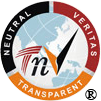All Categories

ISO 9001:2015 REVISION
ISO/FDIS 9001 encourages increased external focus on quality management as part of its risk-based approach – work with TNV to transition to the new edition.
ÂÂ
ISO/FDIS 9001 positions the new version of the standard as an integral part of an organization’s efforts towards sustainable development and promotes it as a tool for improving overall performance.
It encourages more internal and external stakeholder focus as part of the adoption of a risk-based approach to quality management and emphasizes the importance of adopting a Quality Management System as a strategic decision for an organization.ÂÂ
ÂÂ
TNV offer a suite of solutions to help you make the transition from the current ISO 9001:2008 certification to meet the requirements of ISO 9001:2015 in form of open house training.
ISO/FDIS 9001 – THE CORE CHANGES
In addition to renaming and repositioning some QMS requirements, other significant new requirements have been introduced.
ORGANIZATIONAL CONTEXT
Consideration of an organization’s context must now be an element of the QMS design and implementation process.
RISKS AND OPPORTUNITIES
A vital part of the planning and implementation of a QMS is a new requirement to identify the risks and opportunities that can potentially impact the operation and performance of the QMS, as well as the corresponding ‘proportionate’ actions to address them.
LEADERSHIP
Top-level management is now required to demonstrate a greater direct involvement in the organization’s QMS, with a focus on ‘leadership’ rather than just management of the QMS.
DOCUMENTED INFORMATION
The terms ‘documented procedure’ and ‘record’ used in ISO 9001:2008 have both been replaced throughout the FDIS 9001 by the term ‘documented information’. This is defined as information that is required to be controlled and maintained by an organization. It is up to each organization to determine the level and type of documentation necessary to control its own QMS.
OTHER QMS REQUIREMENTS
There are also other changes to QMS requirements, including:
- Proposed specific requirements for organizations in relation to the execution of a process approach when planning, implementing and developing a QMS
- Identification of the competence necessary for personnel doing work that affects its quality performance
- Identification and maintenance of the knowledge needed to ensure that an organization can achieve conformity of products and services
- A risk-based approach to ascertain the type and extent of controls suitable to all types of external provider
STRUCTURE AND TERMINOLOGY
The FDIS 9001 adopts the clause structure specified in Annex SL, which is now the required framework for all new and revised ISO Standards. The stated intention behind this is to ensure that the final version of ISO 9001 is aligned with other management systems standards.ÂÂ
By utilizing the Annex SL structure, it is intended to present QMS requirements in a more consistent, rational manner and not simply offer a template for the elements of an organization’s QMS.
It is important to note that for those organizations that already have an ISO 9001 compliant QMS, there will be no requirement to change their existing QMS procedure and document structure, or the terminology they use, to mirror that specified in FDIS 9001.
ISO 9001:2008 TRANSITION
Organizations that are already certified to ISO 9001:2008 will have three years from formal publication of ISO 9001:2015 to transfer to the new version of this standard. Based on the current publication schedule, this transition period would end in September 2018.
HOW CAN TNV HELP?
We provide training courses to help you understand the requirements of ISO/FDIS 9001 and risk-based thinking. We are the first professional learning and development organization to offer one-day courses as an RAB-QSA Approved.
Our experts can carry out a gap analysis against the requirements of ISO/FDIS 9001 to make the transition smooth and transparent. This exercise will provide your organization with structured assistance to highlight the extent to which existing systems and controls cover the requirements of ISO/FDIS 9001, or to identify an implementation action plan, where needed.
We can also offer audit and certification against the requirements of ISO/FDIS 9001. This can then be replaced by certification to ISO 9001:2015 following final, formal publication of the revised version of the standard later in 2015.
Contact your local TNV office today and start the ISO 9001 transition process or write to training@isoindia.org
ÂÂ







